How To Do A Plank And 22 Killer Plank Variations
Use the plank to build a strong link between your upper and lower body
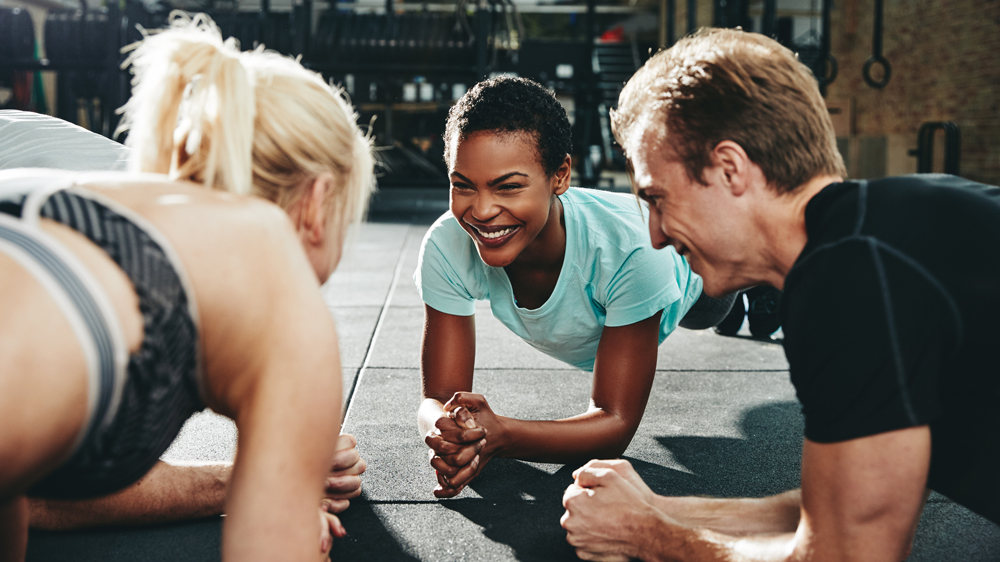
There is perhaps no exercise that provides more benefits with less movement than the classic plank. Maximum returns for minimum movement is the plank’s business, and business is good.
All you have to do is hold the plank for as long as you can and you’ll strengthen all kinds of muscles, with the abs in particular feeling the burn.
It sounds simple enough, but once you adopt the position you’ll quickly realise that staying there for anything longer than 20 seconds is an arm-shaking, core-quaking ordeal.
Benefits Of The Plank
Master the plank and you’ll have a core so tough even Jules Verne wouldn’t contemplate travelling to the centre of it. The plank strengthens and tones an array of muscles found all over your body, including your shoulders, arms, lower back and rump, but the primary target is the abs, which really feel the squeeze.
There’s even a free mental workout chucked in too, because your willpower is tested by the challenge of staying perfectly still for as long as possible.
How To Do A Plank
The plank is all about posture. Your weight should be on the balls of your feet and your elbows, with your hands locked together in front. Keep your back and hips aligned so you form a straight line from your shoulders to your ankles. Brace your abdominals, and don’t raise or lower those hips. That’s cheating. Struggling? If even adopting the position proves impossible, start with your knees on the ground. Once you can hold this bent-knee plank for two minutes, get back on those toes.
How Long Should You Hold A Plank?
This question is the topic of more debate than you would have thought, with many people suggesting that holding a plank for as long as possible is pointless. These people include Stuart McGill, emeritus professor of spine biometrics at the University of Waterloo in Canada, who suggests three short bursts of ten-second planks is best if you must do them at all (he recommends the bird dog, side plank and sit-up as better exercises).
Other criticisms include the suggestion that most people aren’t engaging the core properly or holding the correct position when they shoot for time goals. This is definitely something to consider when you check out our rough guide to plank times below, because if you can only make a minute by letting your hips drop or raising them too high, then it’s not worth holding it that long. Do it right and judge when to stop by how you feel, not an arbitrary time goal.
Speaking of arbitrary time goals, here are some great ones for the plank, plus a couple of truly ridiculous plank holds from record holders.
Get the Coach Newsletter
Sign up for workout ideas, training advice, reviews of the latest gear and more.
- 30sec – novice
- 1min – average
- 1min 30sec – good
- 2min – very good
- 3min – excellent
- 5min – plank master
- 9hr 30min 01sec – the plank world record has been hotly contested in recent years, and the two leading contenders have been Chinese police officer Mao Weidong and US Marine veteran George Hood, with the record going back and forth between the pair since 2016. However, there is now a new plank world record holder. Daniel Scali held the position for an astonishing 9hr 30min 1sec to beat the previous record of 8hr 15min 15sec set by Hood in 2020. The 28-year-old Scali, who is from Australia, set his record to raise awareness of chronic pain conditions – he is a chronic pain sufferer himself. With Hood now retired from plank world record attempts (he set his last one at the age of 62!), it’s up to Mao to break Scali’s mark… or perhaps a new planker will enter the fray.
22 Killer Plank Variations
The plank is a fine move, but for the experienced trainee it swiftly reaches the point of diminishing returns. It's like any other move – you might start with a humble 20kg on the bench press, but once that becomes easy you'd ramp up the weight rather than just increasing the reps. Your rule of thumb? Once you can hold a strict plank for two minutes, it's time to upgrade to something tougher.
1 Super plank
First, make sure your basic plank’s up to scratch: abs tight, glutes tensed, body perfectly straight… then make it harder. “Bring your elbows out in front a little, then as you brace everything, drive your elbows into the floor,” says Joe Lightfoot, founder of Results Inc gym. “Feel your lats and abs engage. Quality, not quantity, should be your focus.”
2 Feet-elevated plank
A simple way to increase the difficulty of the standard plank is to place your feet on a step or bench. Hold the position as normal, maintaining a straight line from head to feet, and you’ll find it harder as the result of your feet being elevated.
3 Sandbag drag
Get into a normal plank with a sandbag slightly ahead of you and to one side. Then use one arm to drag it across your body. Switch arms and drag it back. “You can also use a small stack of plates,” says Lightfoot. “Transfer them all to one side, then move them back.”
4 Side plank
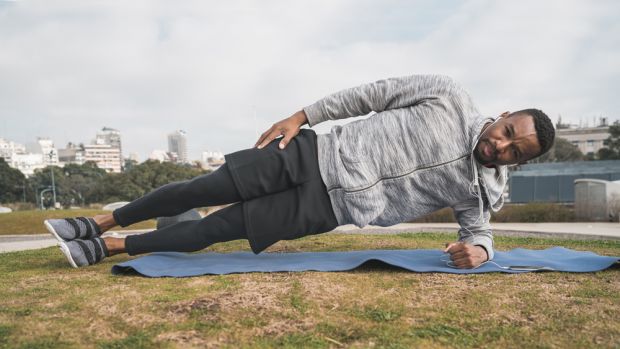
The side plank has a different training effect from the standard plank: it places significant stress on a portion of the posterior abdominals known as the quadratus lumborum. Don’t be put off by the Latin – stimulating this small, neglected muscle prevents a lot of lower back pain. To perform the move, lie on your side with one forearm directly below your shoulder, then raise your hips until your body is in a straight line from head to feet.
5. Star side plank
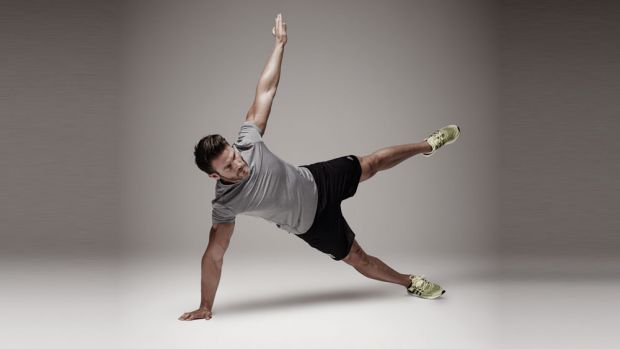
This is a tougher variation of the side plank that enhances its benefits in strengthening the quadratus lumborum. From an elevated plank position with hands positioned under your shoulders and arms extended, twist your body to raise one arm until it’s pointing at the ceiling, then lift your upper leg as well. At this point all four limbs will be extended so you form a star shape. Star-shape-ish, at any rate. You can also do the star side plank while supporting yourself on your forearm like you do with the regular side plank for a slightly easier variation of the exercise.
6 Side plank with reach
Get into a side plank position, or even a star side plank position if you’re feeling strong. Twist your torso until your chest is facing the ground and reach your arm through the gap between your body and the floor. Then rotate back up to your starting position. Do all your reps on one side before switching to the other. This variation increases the challenge to your core, and is also slightly more exciting than just holding the same position.
7 Reverse plank
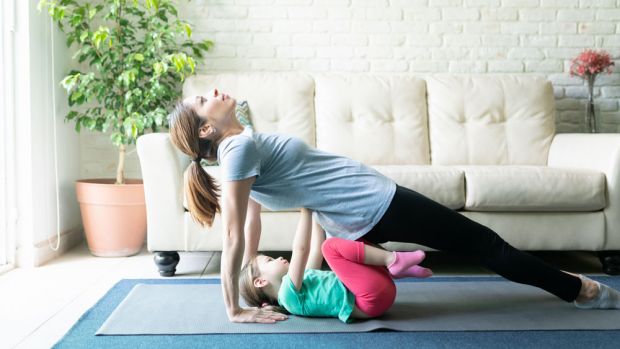
Flip your standard plank over so you’re looking at the ceiling and you’ll help to strengthen your back. When your form’s spot on, the hamstrings, glutes and abdominals will feel the benefit too. The key is in keeping your body straight at all times.
8 Walking plank
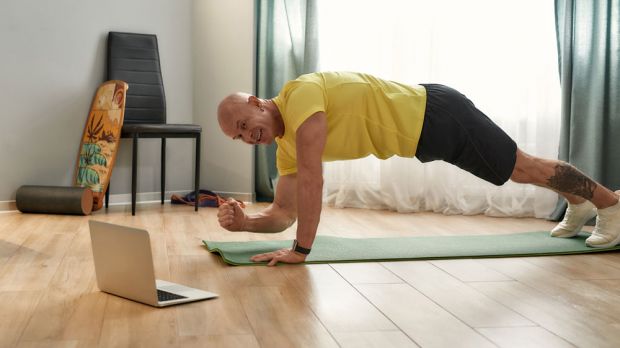
This one adds instability and co-ordination to the mix. “Start in a regular plank position and move from being on your elbows to your hands,” says trainer Adam Wakefield. “Moving one arm at a time, try to place your hand where your elbow was, then reverse the process.” For extra triceps work, add in a press-up between reps.
9 Plank jack
The plank jack combines two age-old favourites, mashing up the plank and the jumping jack. Adding this to your routine will carve a tremendously strong core, plus it can be useful to chuck into a cardio circuit because it’ll keep your heart rate high.
10 Body saw
You’ll need sliders or a pair of towels and a hard, slightly slippy surface to pull off the minimal side-to-side movement required for this tricky variation that provides extra stimulation of the abs. The movement may be slight, but boy will you feel it.
11 Superman plank
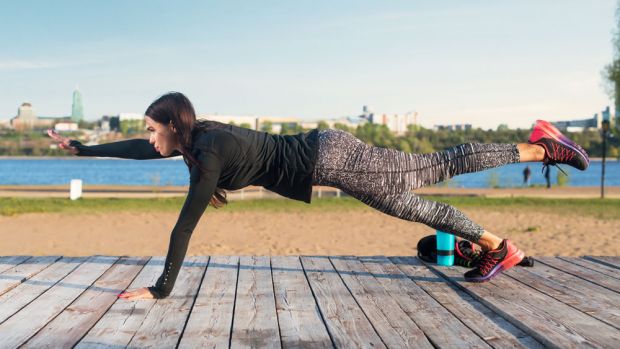
The superman plank is a staple move in strength and conditioning programmes because it teaches mobility and co-ordination. It gives your abs a right kicking, too. When you lift one arm, you should raise the alternate leg, holding for a moment, then repeat on the opposing sides.
12 RKC plank
The Russian Kettlebell Challenge plank doesn’t use a kettlebell. No, we don’t know why either, but we do know it’s double hard. In the typical plank position, retract your shoulder blades to engage the upper traps; all the while, your glutes should be slightly elevated and squeezed. This one’s all about maintaining tension – and keeping your muscles from shaking too violently.
13 Russian press-up
This one strengthens your triceps – and if you’re working on muscle-ups, it’ll improve the transition from pull-up to dip. “Do a press-up, but at the bottom of the rep, lower yourself onto your forearms – then drive back up,” says Wakefield. “You’ll get some of the movement from pressing forwards with your toes, but try to minimise it.”
14 Renegade plank
If you’ve tried a renegade row, you know that the demand on your abs is highest when the dumbbell leaves the floor. Enhance the effect with a pair of benches: set up with your forearms on one and feet on another, then pick a dumbbell up from the floor with one hand and hold for time. Your obliques will thank you later.
15 Stir the pot
You’ll need a gym ball for this one. “Get into a plank position with your forearms on the ball, then move the ball in a circular motion while keeping your hips as still as possible,” says Wakefield. “Do five to ten reps in one direction, then switch directions. The slower you go, the better.” Your abs will be worked from unexpected angles.
16 Rope wave
Battle ropes aren’t just for all-out smashing – they’ll add core control to your plank too. “Assume the position, then grab a rope with one hand,” says W10 Performance trainer Olli Foxley. “Slam the rope up and down while keeping the rest of your body as still as possible.” Try three sets of ten seconds.
17 Add weight
This couldn't be simpler. A weight plate will work, but without a training partner it’s impractical – instead, wear a weighted vest or wrap some chains (your gym has those, right?) around yourself.
18 Alternating shoulder tap plank
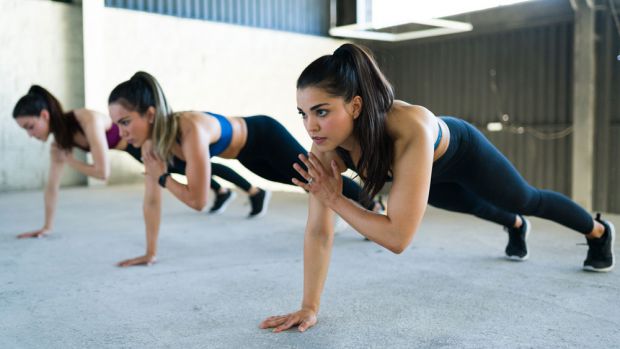
Assume a regular plank position. Keeping your hips square to the floor, tap your left shoulder with your right hand, then return it to the start position and repeat on the opposite side with your left hand. Aim to complete 15-20 reps on each side.
19 Plank to downward-facing dog toe taps
Start in an elevated plank position with hands positioned under your shoulders and arms extended. Push through your hands to move your torso backwards while raising your hips so you end up in an inverted V position. Then tap your right foot with your left hand and return to the plank position. Repeat the movement but this time tap your left foot with your right hand. The twisting motion of the exercise helps to work the abs from different angles, and by moving into the downward-facing dog position you get a free bonus in the form of stretching the muscles on the backs of your legs, especially your calves.
20 TRX plank
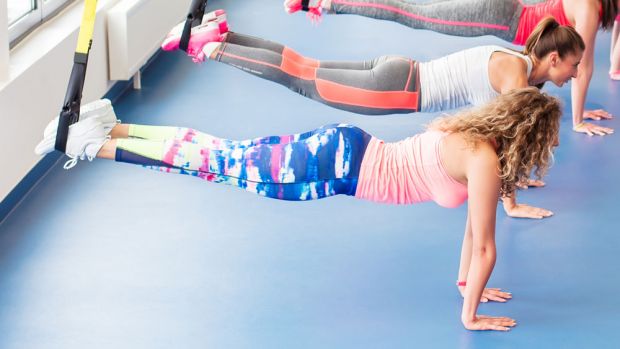
One of the toughest versions of the feet-elevated plank is doing it with your feet in the handles of a suspension trainer. When you try to hold your position, the unstable support provided by the rope means your core will have to work even harder than usual to hold the plank.
21 Rocking plank
Another variation in which you add just the tiniest amount of movement to increase the challenge to your core. You can do the rocking plank whether you’re supporting your upper body with your forearms or your hands. While maintaining the plank position, rock yourself forwards by pressing your toes into the ground until your shoulders move past your hands (or elbows, if you’re resting on your forearms) and then rock back until your heels move past your toes.
22 Power Plate plank
If you’ve never used the Power Plate in your gym, the plank is the ideal exercise for getting acquainted with it. The vibrations from the machine travel through the muscles, making them tire faster, so you might find that even if you’re a plank master who’s used to holding the position for several minutes at a time, you’ll struggle to get past the 60-second mark when performing it on the Power Plate. Set the Power Plate to 30-35/low and then rest either your forearms or feet on the plate when adopting the plank position.
Coach is a health and fitness title. This byline is used for posting sponsored content, book extracts and the like. It is also used as a placeholder for articles published a long time ago when the original author is unclear. You can find out more about this publication and find the contact details of the editorial team on the About Us page.










